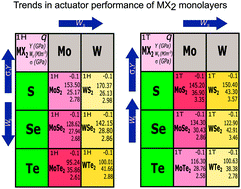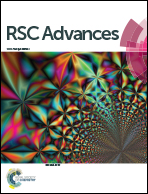Charge-induced electromechanical actuation of Mo- and W-dichalcogenide monolayers
Abstract
Using first-principle density functional calculations, we investigate electromechanical properties of two-dimensional MX2 (M = Mo, W; X = S, Se, Te) monolayers with the 1H and 1T structures as a function of charge doping for both electron and hole doping. We find that by increasing the atomic number, ZX, of X atoms (ZS < ZSe < ZTe), the work density per cycle of the MX2 monolayers are increased and decreased for the 1H and 1T structures, respectively. On the other hand, the work density per cycle of the WX2 monolayers are higher than that of the MoX2 monolayers for both the 1H and 1T structures. Therefore, WTe2 and WS2 monolayers for the 1H and 1T structures, respectively, have the best electromechanical performances in the MX2 compounds. In addition, the MX2 monolayers show a reversible strain up to 3%, which is higher than that of graphene (∼1%). Our results provide an important insight into the electromechanical properties of the MX2 monolayers, which are useful for artificial muscles applications.



 Please wait while we load your content...
Please wait while we load your content...